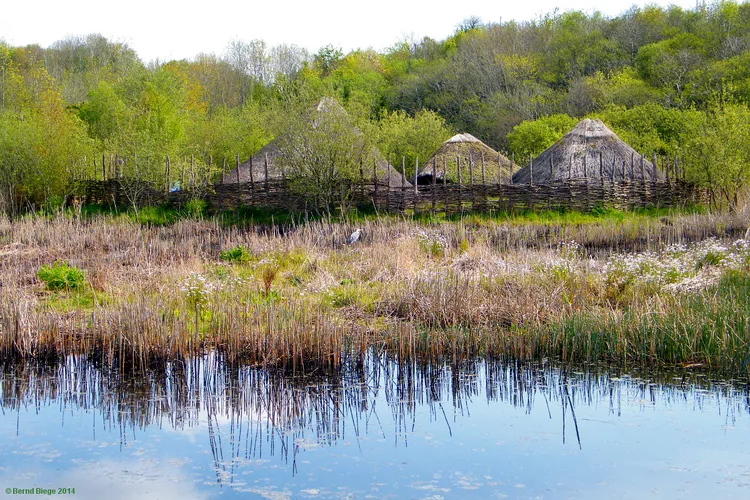Summary
- Cairns: Artificial piles of stones, often associated with tombs.
- Crannógs: Island-based ringforts typically linked to the mainland.
- Passage Tombs: Round tombs featuring a prominent passageway to a burial chamber.
- Wedge Tombs: Smaller court-like tombs that resemble wedges.
Exploring Ireland’s Unique Prehistoric Monuments
When visiting Ireland, many travelers may find themselves puzzled by the various ancient structures they encounter. Questions about the distinctions between wedge tombs and passage tombs, the meaning of a rath, or the significance of crannogs often arise. Additionally, understanding the role of figures like the Fianna and fairies in this landscape adds another layer of intrigue.
Ireland boasts a diverse range of prehistoric monuments. Here’s a comprehensive list of the most commonly encountered types, organized alphabetically:
Cairns
A cairn is an artificially constructed pile of stones. An illustrative example is Queen Maeve’s Grave on Knocknarea, located near Sligo. The true nature of this structure—whether it constitutes a solid pile or conceals a tomb—remains unknown.
Cashels
Cashels are circular enclosures primarily constructed from stone. Generally, this includes a dirt enclosure with an outer ditch and inner earth-wall topped by a stone-wall. The design may range from basic to massive, depending on the specific cashel.
Court Tombs
Court tombs, which first appeared around 3,500 BC, typically boast a half-moon shape with a prominent “courtyard” at the entrance. Such courtyards were likely utilized for various rituals, including burials and festive celebrations.
Crannógs
Crannógs are distinctive ringforts constructed on small islands adjacent to the mainland. These forts match the size of the islands they occupy, often linked to the mainland via narrow bridges or causeways. An island that presents a more circular profile is usually indicative of artificial creation.
Dolmens
Dolmens represent the remnants of portal tombs, with Poulnabrone in the Burren standing as the most renowned Irish dolmen.
Enclosures
The term “enclosure” broadly refers to any man-made structure that delineates a specific part of the landscape. This vague classification often involves ceremonial or military constructs, sometimes appearing alongside tombs and henges.
Fairy Hills
Over millennia, passage tombs and similar monuments have been reinterpreted as portals to the otherworld, likened to dwelling places for fairies. This belief may stem from mysterious symbols inscribed on the stones and artifacts found within or around these sites.
Henges
Henges comprise circles formed from stones or wood, primarily serving ceremonial purposes. They may exhibit astronomical or geographical alignments, as seen in structures like Drombeg Stone Circle. However, none of the Irish henges match the grandeur of Stonehenge in England.
Heroes’ Graves and Beds
Many partially destroyed and uncovered tombs and chambers have been interpreted through the lens of Celtic mythology, particularly the Fianna cycle. Numerous locations in Ireland are regarded as the final resting places of legendary heroes and lovers.
Hill Forts
Hill forts are generally ringforts or ceremonial enclosures situated on elevated terrain, sometimes occupying the sites of ancient tombs.
La Tène Stones
Exclusive to Turoe and Castlestrange, La Tène Stones are standing stones inscribed with carvings akin to those of Celtic tribes found throughout mainland Europe.
Ley-Lines
Ireland also echoes the concept of “ley-lines,” linear alignments that connect significant locations across the landscape. Ley-lines remain a topic of debate regarding their scientific validity, historical context, and existence, often leading to varied interpretations.
Ogham-Stones
Ogham stones are standing stones featuring inscriptions from the ancient Ogham writing system, predominantly used in Ireland. Unfortunately, the brevity of these inscriptions often limits their significance in historical contexts.
Passage Tombs
Passage tombs are round burial sites characterized by a defined passageway leading to the chamber. Most prominent around 3,100 BC, renowned examples include Newgrange and Knowth, both of which exhibit fascinating astronomical alignments.
Portal Tombs
Portal tombs comprise a formation of at least three massive standing stones topped by a significantly large slab, creating a “portal” appearance. The covering slab can weigh up to 100 tons, forming a chamber’s roof. These structures predominantly emerged between 3,000 and 2,000 BC.
Promontory Forts
Promontory forts are ringforts situated on cliffs, with one side usually bordered by sheer drops. The Aran Islands feature some of the most impressive examples, including Dun Aonghasa.
Raths
Raths are primarily ringforts characterized by a ditch and an earthen wall, often capped with a wooden palisade. These structures served both defensive and ceremonial purposes.
Ringforts
Generally, a ringfort refers to any broadly circular prehistoric fortification. This category includes raths, cashels, and promontory forts, distinguished by their defensive or ceremonial functions.
Souterrains
Souterrains are underground cellars and passages believed to have served as storage, hiding spaces, and escape routes, often found near settlements and tombs.
Standing Stones
Standing stones, whether solitary or part of a henge, may demonstrate astronomical or geographical alignments in connection with associated tombs or enclosures. Some stones were practical, serving as scratching posts for livestock.
Wedge Tombs
Wedge tombs closely resemble court tombs, notably appearing smaller and taking on a wedge-like shape. These tombs were particularly popular around 2,000 BC.





